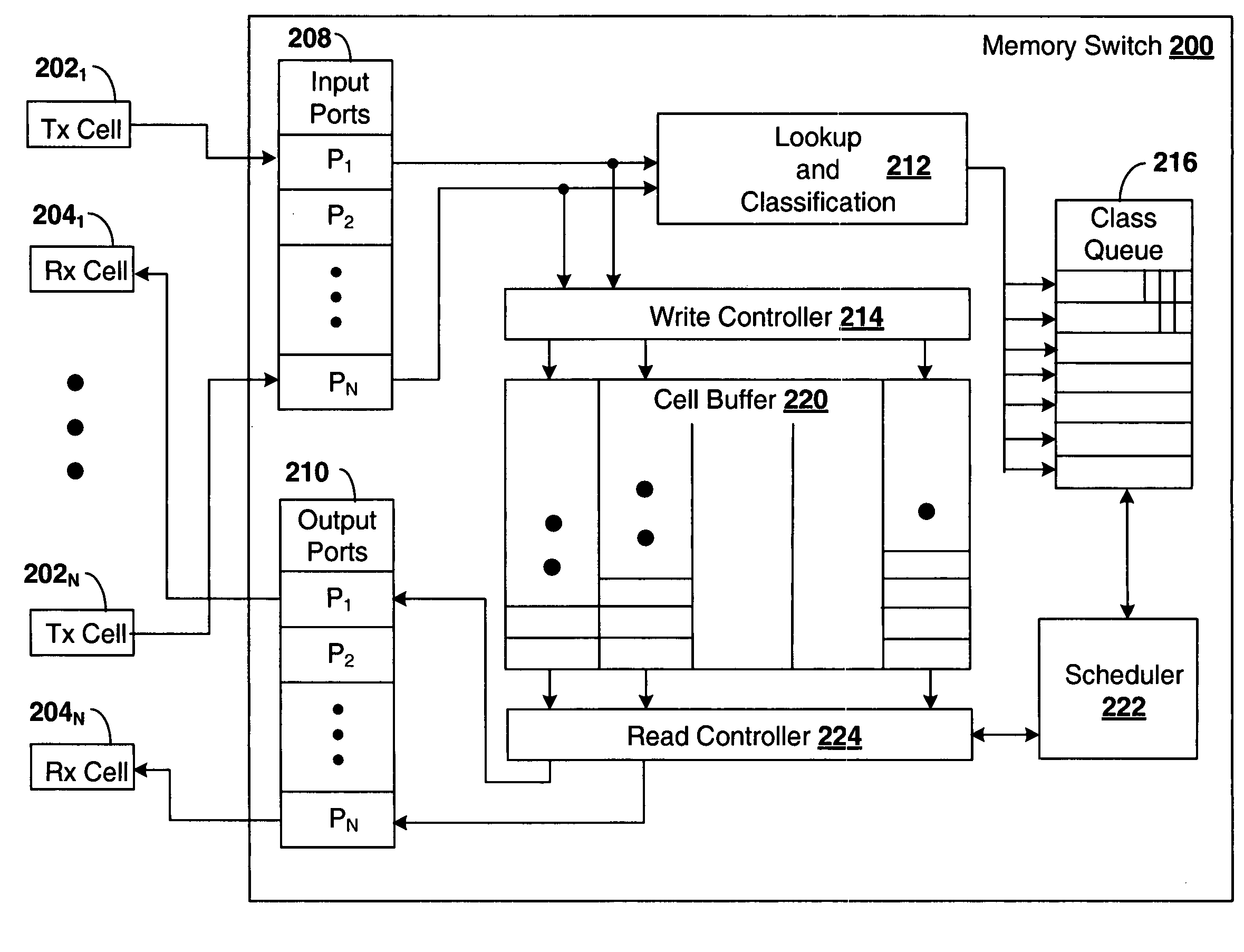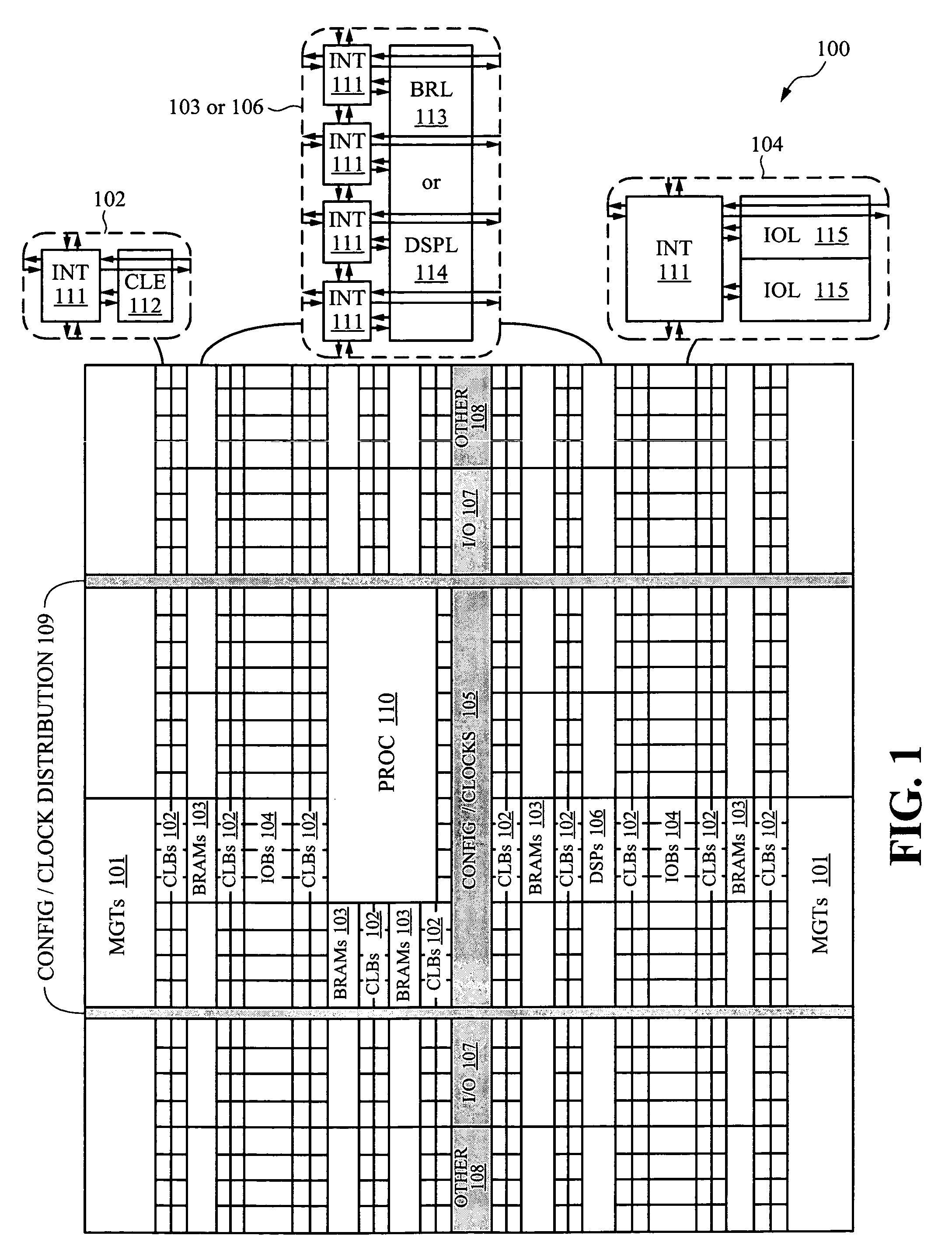Scalable shared network memory switch for an FPGA
- Summary
- Abstract
- Description
- Claims
- Application Information
AI Technical Summary
Benefits of technology
Problems solved by technology
Method used
Image
Examples
Embodiment Construction
[0023]Embodiments of the present invention are described for use in an FPGA. The network switch according to the present invention provides for communications between nodes or modules programmed into the logic of an FPGA. The network switch is also programmed into the logic. Further, the FPGA memory can be configured to meet the parameters defined for the switch. Although the following description of embodiments of the present invention are described with respect to particular components of an FPGA, it is understood that other integrated circuits with on board programmable logic and memory can be programmed to include a network switch according to embodiments of the present invention. For reference, FIG. 1 shows one configuration of components of an FPGA that can be configured to include a network switch according to the present invention.
FPGA Overview
[0024]The FPGA of FIG. 1 includes a large number of different programmable tiles including MGTs 101, configurable logic blocks (CLBs ...
PUM
 Login to View More
Login to View More Abstract
Description
Claims
Application Information
 Login to View More
Login to View More - R&D
- Intellectual Property
- Life Sciences
- Materials
- Tech Scout
- Unparalleled Data Quality
- Higher Quality Content
- 60% Fewer Hallucinations
Browse by: Latest US Patents, China's latest patents, Technical Efficacy Thesaurus, Application Domain, Technology Topic, Popular Technical Reports.
© 2025 PatSnap. All rights reserved.Legal|Privacy policy|Modern Slavery Act Transparency Statement|Sitemap|About US| Contact US: help@patsnap.com



